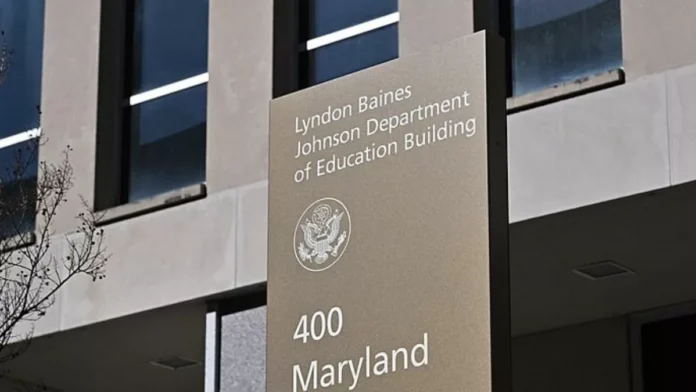The U.S. Department of Education, under the Trump administration, has recently made a bold statement regarding race-based decisions in education. In a controversial move, the department has stated that any form of diversity, equity, and inclusion (DEI) initiatives in schools will be considered a civil rights violation and may result in the loss of federal funding. This decision has sparked a heated debate among educators, lawmakers, and the public.
Many have criticized this decision, seeing it as a step backwards in the fight for equality and fairness in education. They argue that DEI efforts are crucial in addressing systemic racism and creating a more inclusive learning environment for all students. However, the Trump administration has stood firm on their stance, claiming that these initiatives discriminate against certain groups and go against the principles of a fair and equal education system.
But what exactly does this mean for schools and students across the country? And why is the Trump administration taking such a strong stance on this issue?
First, it is important to understand what DEI initiatives entail. These programs and policies aim to promote diversity, equity, and inclusion in schools by addressing issues of discrimination, bias, and inequality. This can include efforts to increase diversity among faculty and staff, implement curriculum that reflects different cultures and perspectives, and provide resources and support for marginalized students.
The Trump administration argues that these initiatives are discriminatory because they give preferential treatment to certain groups based on their race or ethnicity. They claim that this goes against the principle of a merit-based education system, where students should be evaluated solely on their abilities and achievements. In a statement, the Department of Education stated, “It is simply un-American to discriminate against someone because of their race.”
However, many critics argue that this decision ignores the systemic barriers and inequalities that students of color face in the education system. They argue that without targeted efforts to address these issues, students from marginalized communities will continue to face disadvantages and inequalities in education.
Moreover, this decision also has implications for hiring practices in schools. By labeling race-based hiring as a civil rights violation, the Trump administration is essentially discouraging schools from actively seeking out diverse candidates for their faculty and staff. This could have a detrimental impact on the representation of people of color in the education system.
Furthermore, the threat of losing federal funding for implementing DEI initiatives puts schools in a difficult position. Many schools rely on this funding to provide resources and support for their students, especially those from low-income and marginalized communities. Without this funding, these schools may struggle to provide a quality education for their students.
So why is the Trump administration taking such a strong stance against DEI initiatives in education? Some believe that it is a political move to appeal to their conservative base. Others argue that it is a continuation of the administration’s efforts to roll back civil rights and diversity initiatives in various sectors.
Regardless of the motivation behind this decision, the implications are concerning. By deeming DEI initiatives as a civil rights violation, the Trump administration is sending a harmful message that diversity and inclusion are not important in education. This decision may have a detrimental impact on the progress made towards creating a more inclusive and equitable education system.
In conclusion, the U.S. Department of Education’s stance on DEI initiatives is a controversial and concerning one. While some may argue that these initiatives are discriminatory, it is important to acknowledge the historical and systemic barriers that students of color face in the education system. Instead of discouraging efforts to promote diversity and inclusion, the administration should work towards addressing these issues and creating a more equitable education system for all students. Only then can we truly achieve a fair and equal education system for all.

